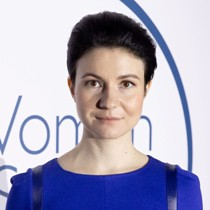Optical Fiber Lasers and Amplifiers. Practical Applications of Fiber-Based Laser Sources
A special issue of Photonics (ISSN 2304-6732).
Deadline for manuscript submissions: closed (1 September 2023) | Viewed by 21590
Special Issue Editors
Interests: rare-earth-doped fiber lasers and amplifiers; mode-locked fiber lasers; specialty optical fibers
Special Issues, Collections and Topics in MDPI journals
Interests: fiber lasers and amplifiers; special mid-ir nonlinear fibers; ultrafast fiber metrology; fiber-based microresonators
Special Issues, Collections and Topics in MDPI journals
Interests: optical fibers; fiber lasers and amplifiers; mode-locking; ultrashort pulses; saturable absorbers; laser radiation impact on biological tissues
Special Issues, Collections and Topics in MDPI journals
Special Issue Information
Dear Colleagues,
The development of new fiber structures and new glass matrices (silica-based and non-silica-based, such as tellurite, chalcogenide, and fluoride), the search for new active dopants, as well as the search and optimization of new fiber laser schemes have made it possible to significantly expand the spectral range of available laser sources that are covered, and at the same time, new laser technologies can be implemented. As a result, the global market for fiber laser systems is growing rapidly, and it already reached a value of about USD 3 billion in 2021. From Optech Consulting data, 52% of industrial lasers market in 2021 were fiber-based systems, and to date, the market trend does not indicate that any saturation has occurred. Currently, fiber lasers are key elements of material processing equipment, LIDARs, some medical equipment, telecommunications, and so on. The further development of fiber-based sources, optical fibers, and component bases will allow existing limitations to be overcome, create new possibilities for practical applications, and begin a new era of laser sources. The purpose of this Special Issue is to highlight the recent achievements in the field of fiber lasers and attract papers that describe recent progress in the field of fiber-based laser sources as well as their applications.
Topics to be covered include but are not limited to:
- Pulsed fiber-based master oscillators; new regimes;
- Single-frequency fiber lasers;
- Raman fiber lasers;
- Brillouin fiber lasers;
- High-power pulsed and cw fiber lasers and amplifiers; mode-instability effects, coherent combination, and nonlinear effects;
- Ultrafast fiber lasers and their characterization;
- Nonlinear dynamics in optical fibers;
- Fiber lasers for operation in new spectral ranges;
- Lasers and amplifiers based on special fibers including multicore fibers, microstructured fibers, photonic crystal fibers, gas- and liquid-filled fibers, and others;
- Practical applications of fiber laser systems including telecommunications, spectroscopy, sensing, and so on;
- The development and investigation of promising materials used as saturable absorbers in fiber lasers.
Dr. Svetlana Aleshkina
Dr. Elena Anashkina
Dr. Serafima Filatova
Guest Editors
Manuscript Submission Information
Manuscripts should be submitted online at www.mdpi.com by registering and logging in to this website. Once you are registered, click here to go to the submission form. Manuscripts can be submitted until the deadline. All submissions that pass pre-check are peer-reviewed. Accepted papers will be published continuously in the journal (as soon as accepted) and will be listed together on the special issue website. Research articles, review articles as well as short communications are invited. For planned papers, a title and short abstract (about 100 words) can be sent to the Editorial Office for announcement on this website.
Submitted manuscripts should not have been published previously, nor be under consideration for publication elsewhere (except conference proceedings papers). All manuscripts are thoroughly refereed through a single-blind peer-review process. A guide for authors and other relevant information for submission of manuscripts is available on the Instructions for Authors page. Photonics is an international peer-reviewed open access monthly journal published by MDPI.
Please visit the Instructions for Authors page before submitting a manuscript. The Article Processing Charge (APC) for publication in this open access journal is 2400 CHF (Swiss Francs). Submitted papers should be well formatted and use good English. Authors may use MDPI's English editing service prior to publication or during author revisions.
Keywords
- pulsed fiber-based master oscillators; new regimes
- single-frequency fiber lasers
- Raman fiber lasers
- brillouin fiber lasers
- high-power pulsed and cw fiber lasers and amplifiers; mode-instability effects, coherent combination, and nonlinear effects
- ultrafast fiber lasers and their characterization
- nonlinear dynamics in optical fibers
- fiber lasers for operation in new spectral ranges
- lasers and amplifiers based on special fibers including multicore fibers, microstructured fibers, photonic crystal fibers, gas- and liquid-filled fibers, and others
- practical applications of fiber laser systems including telecommunications, spectroscopy, sensing, and so on
- the development and investigation of promising materials used as saturable absorbers in fiber lasers







